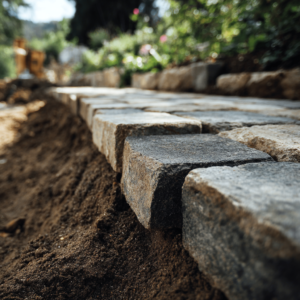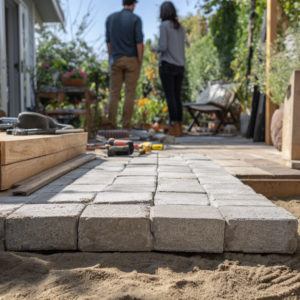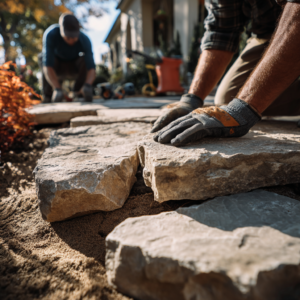When it comes to protecting the integrity of outdoor surfaces, the clever use of a paver drainage system plays a crucial role in ensuring that every paved area not only looks great but functions flawlessly over time. Whether you’re working with a sleek driveway, a charming patio, or a durable walkway, managing water is one of the most overlooked yet essential aspects of any successful paver installation.
That’s because, without proper drainage, even the most beautiful design can quickly turn into a high-maintenance headache.
A paver drainage system is specifically designed to control how water flows, drains, and disperses through or around the paver surface – thus preserving both the look and the structure of your outdoor investment over time.
In this article, you’ll learn exactly what a paver drainage system is, how it works, and why it’s such a critical part of any paving project. We’ll explore the benefits of having one in place, the challenges you might face, the types of homes and surfaces where it’s most needed, and what to consider when installing or maintaining one.
Jump to:
What is a paver drainage system?
A paver drainage system is a designed solution that helps manage water flow in areas paved with interlocking bricks or stones. It typically includes surface channels, permeable layers beneath the pavers, and sometimes subsurface piping.

The system captures water that would otherwise pool on the surface or seep below, and redirects it to a safe outlet. Components can range from simple sloped designs that direct water away to advanced systems with geotextiles and perforated pipes.
Why it matters
A good paver drainage system is essential to a successful paver installation in rainy areas, no doubt about that; without it, water can erode the base, shift the stones, and even cause mold or mildew to grow between the pavers. Poor drainage also increases the need for repairs over time. When done correctly, the system protects both the structure and the aesthetics of your paved area – given the fact it prevents uneven surfaces, unwanted vegetation, and costly fixes.
Pros and cons of a paver drainage system
Let’s break down the main advantages and disadvantages of investing in a paver drainage system, shall we? So you know exactly what to expect from your project.
The benefits
As already said, a well-designed paver drainage system offers excellent water management, increases the durability of the installation, and minimizes structural issues. It also keeps the surface clean and safe, reducing the risk of slipping or weed growth. Some systems even help with groundwater recharge if built using permeable materials.
Effective drainage beneath pavers helps prevent issues such as water infiltration, shifting surfaces, and base erosion. These are not small perks, you see – they can extend the life of your investment for decades.
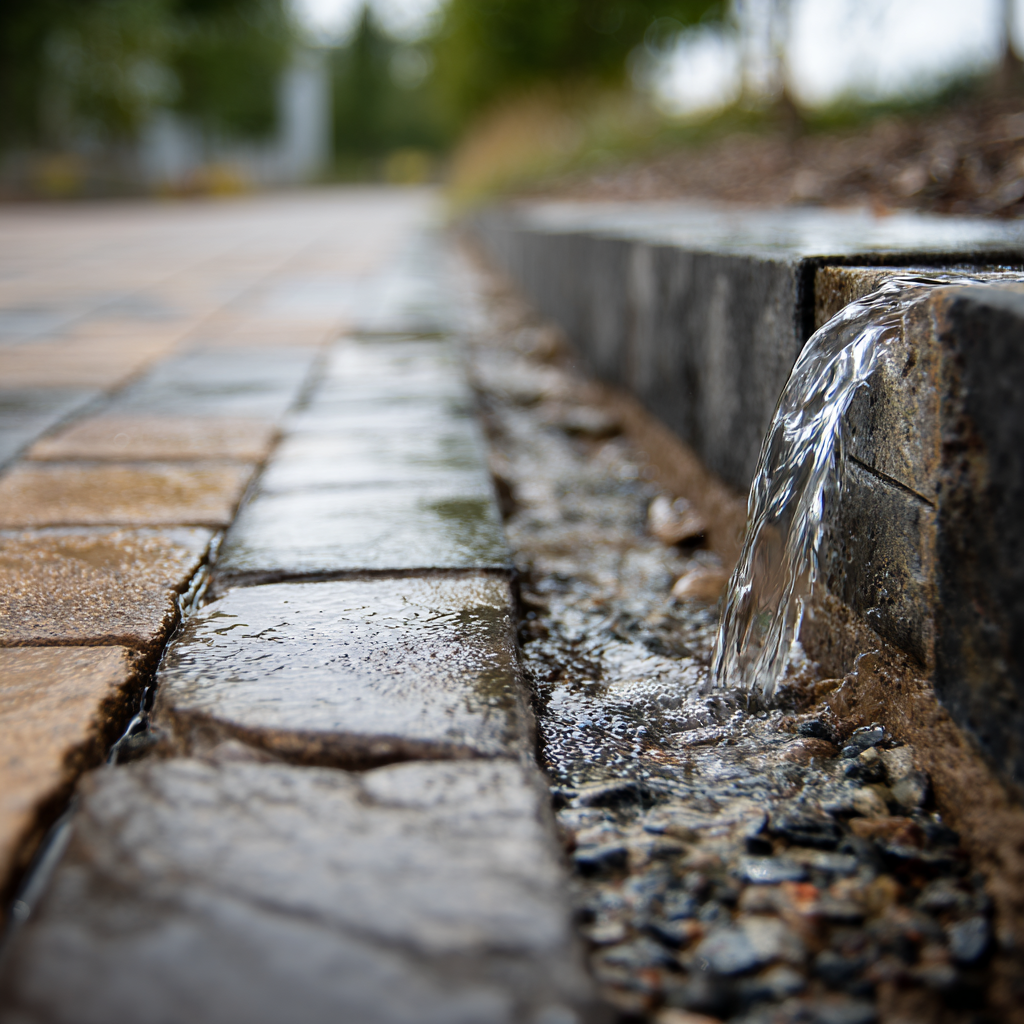
The challenges
Of course, on the other hand, a paver drainage system can also increase the initial cost of a project. You might need to invest in additional materials like pipes or gravel bases, and the design requires careful planning. If the system is not installed properly, it may fail entirely, causing more damage than it prevents. City codes and regulations can also affect what kind of drainage system you’re allowed to install. So while the payoff is high, it’s important to make sure the job is done right the first time.
When and where a paver drainage system is needed
Now let’s look at the real-world scenarios where a paver drainage system isn’t just helpful, but necessary.
Types of homes and surfaces that benefit
A paver drainage system is highly recommended for homes with large paved driveways, patios, pool decks, or walkways, especially if these are located on clay soils or in areas that get frequent rainfall. Homes built on sloped lots or with poor natural drainage should always consider this kind of system. It ensures that water doesn’t flow back toward the home or settle in areas where it can’t be absorbed.
Soil and location factors
The need for a paver drainage system often comes down to soil type and location. Clay soils, for example, don’t drain well on their own, which means water tends to pool or linger; if your pavers are laid over this type of soil without a drainage system, you’re bound to run into trouble. Even the slope of the ground can create drainage issues if not accounted for in the design. In many of these cases, a drainage system is the only way to keep the paved area structurally sound and safe to use.
How to install and maintain a paver drainage system
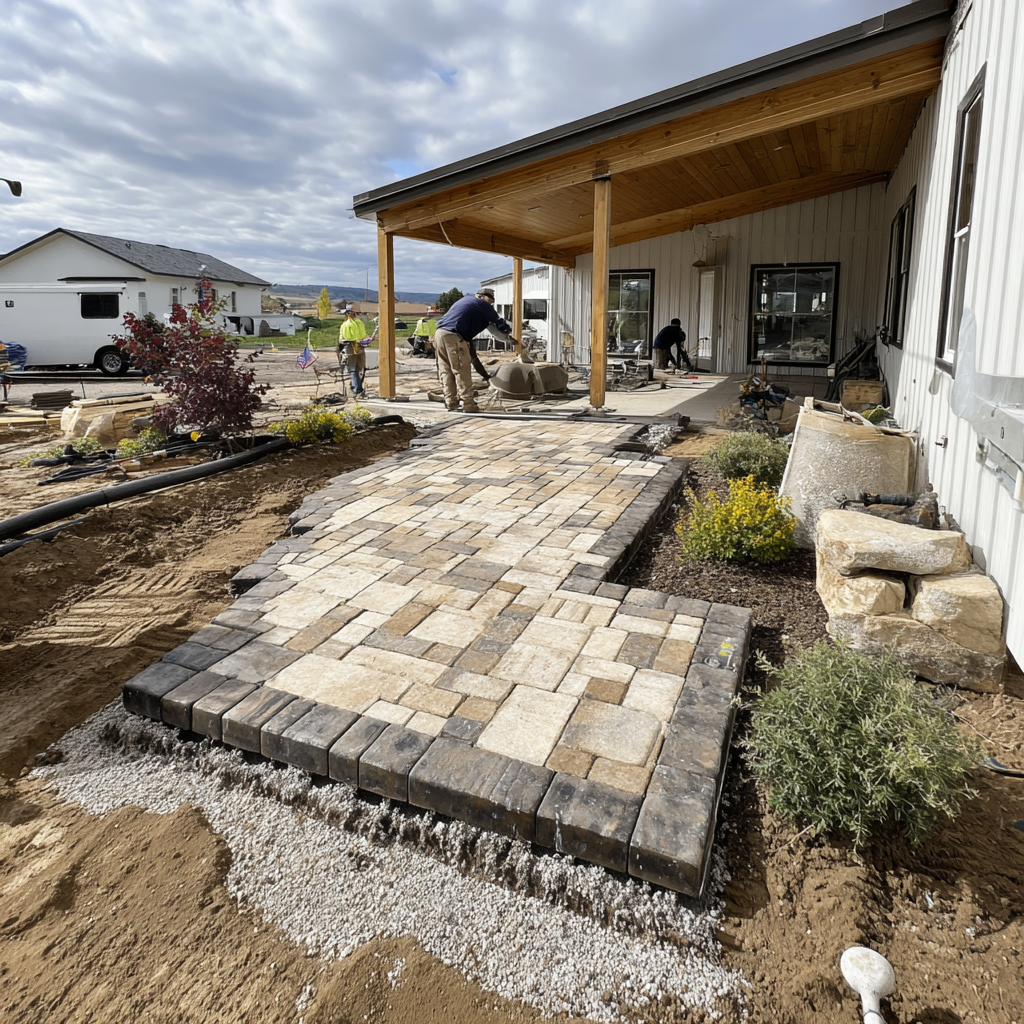
This is key to making the most of this feature – although we never recommend a DIY approach, given the hard nature of this task.
Installation steps
Installing a paver drainage system begins with proper planning. The installer assesses the area, determines water flow direction, and selects the best drainage method, whether it’s surface grading, channel drains, or a gravel base with subsurface piping. The slope must be just right, usually between 1% and 2%, to let gravity do its job.
During installation, trenches may be dug for pipes, gravel is compacted for drainage beds, and geotextiles are placed to prevent clogging. The final layer of pavers is added last, completing the system. Each step needs to be done with care, because even small mistakes, like incorrect slope or misplaced channels, can lead to major drainage failures down the line.
That’s why working with an experienced company like JS Brick makes a big difference. With over two decades of experience in Sarasota, our hardscape professionals know how to design and install a system tailored to your specific space, soil type, and usage needs; our attention to detail and understanding of drainage dynamics ensure that the finished result performs as beautifully as it looks!
Keeping the looks
Once installed, maintaining the paver drainage system is all about keeping things clear and flowing. Drains and grates should be inspected and cleaned regularly, especially after heavy rains. If debris or sediment builds up, it can clog the system and cause water to back up. Pavers should also be checked for signs of settling, which could indicate that the base is eroding or shifting.
As experts, we usually say that regular maintenance keeps your patio drainage system functioning effectively; therefore, clear debris from the drainage area regularly and inspect the system after heavy rainfall. With just a little upkeep, the system will perform for years to come.
Sealing the deal: why your pavers deserve proper drainage
A well-designed and properly installed paver drainage system makes all the difference in how your paved areas hold up over time. It protects the investment you’ve made in your outdoor spaces and ensures that you’re not dealing with puddles, erosion, or costly repairs down the road.
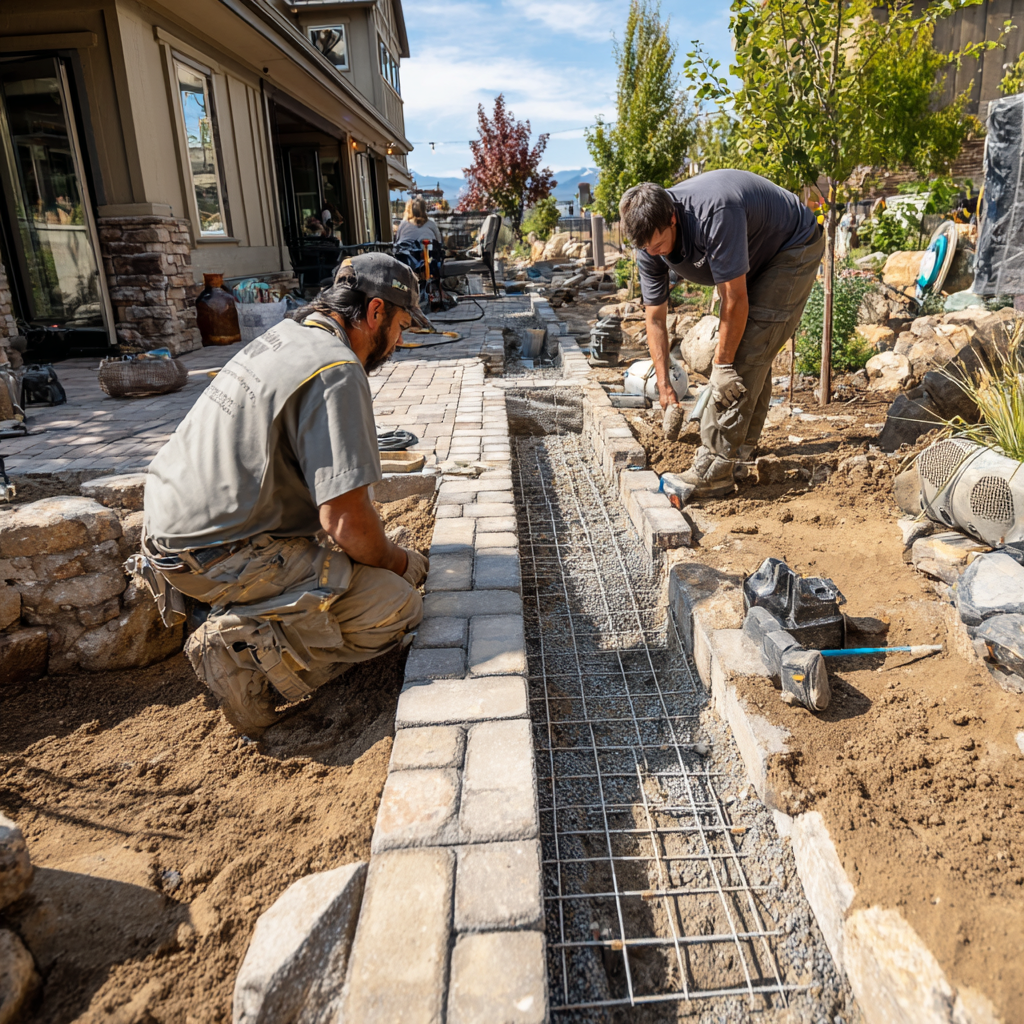
If you’re thinking about adding pavers to your property, or fixing drainage issues with an existing installation, this is your sign to do it the right way.
At JS Brick, our team understands how important a solid drainage system is to a long-lasting, beautiful paver surface. If you live in Sarasota or any surrounding county, make sure to reach out and get expert help designing and installing the ideal solution for your space!
We’ll be waiting.

